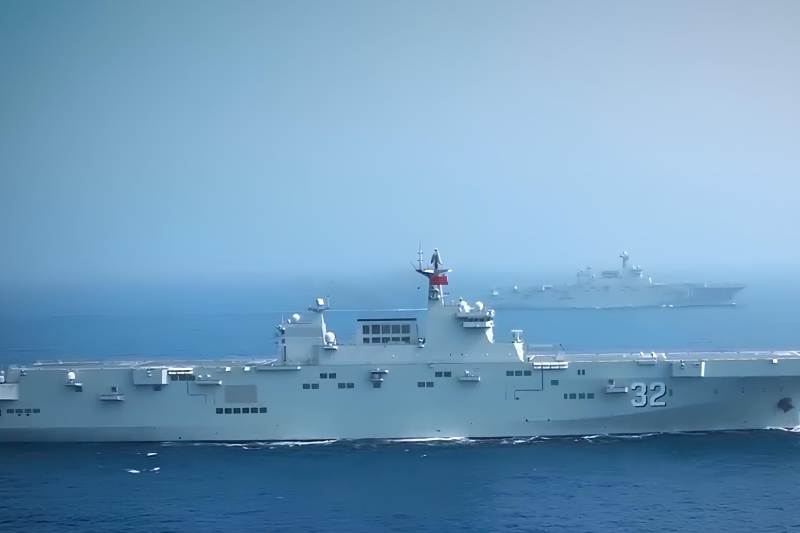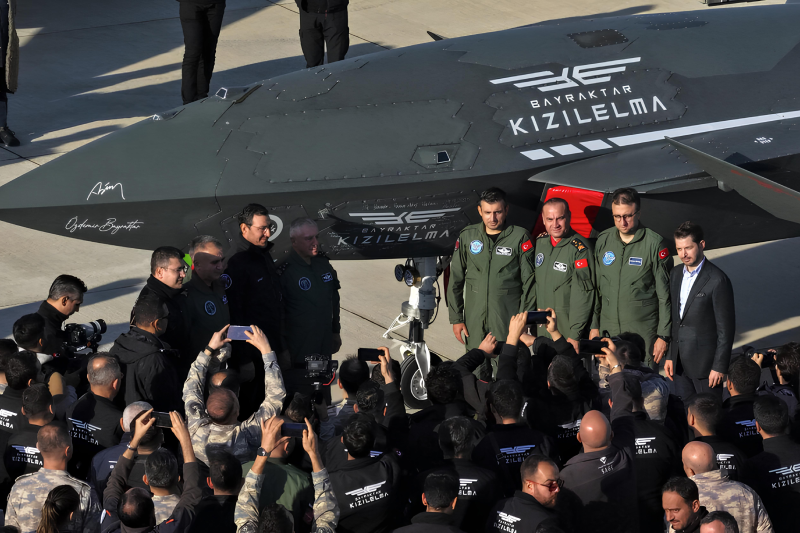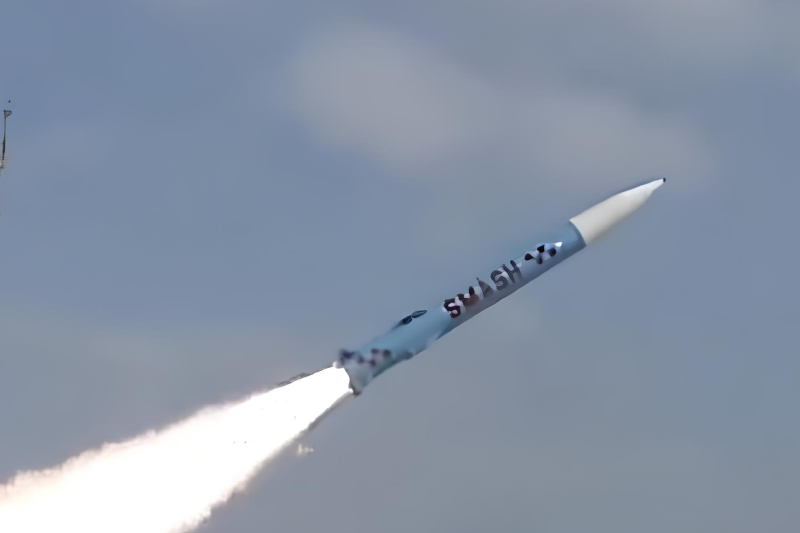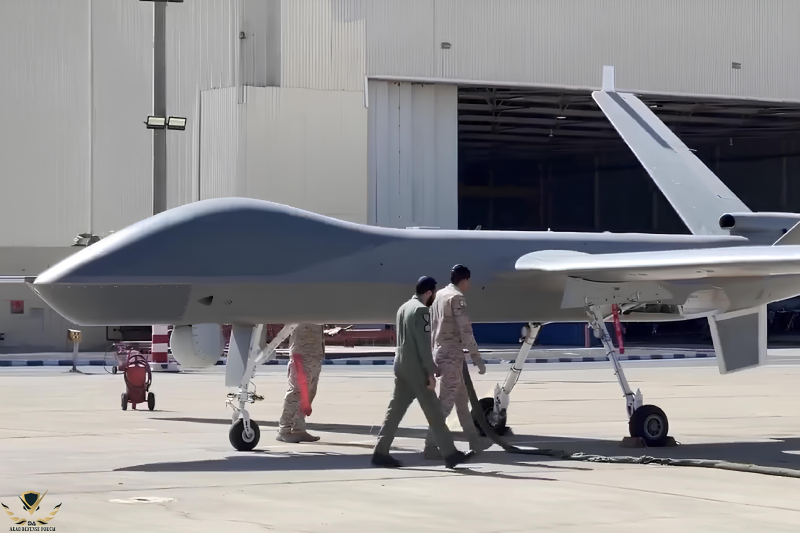Chinese Combat Drones Cross 5,000 Flight Hours In Saudi Arabia
The Royal Saudi Air Force (RSAF) has reached a significant operational milestone with its fleet of Chinese-built Wing Loong II drones, logging 5,000 flight hours as of May 2024, demonstrating the platform’s reliability and operational effectiveness in demanding Middle Eastern conditions. The achievement underscores the combat drone’s role in advancing Saudi Arabia’s long-term strategy to expand unmanned capabilities while reducing dependence on traditional manned aircraft for tactical operations. The Wing Loong II drones manufactured by China’s Aviation Industry Corporation (AVIC) serve as core assets for RSAF intelligence, surveillance, and precision strike missions across border security, counterterrorism, and regional security operations.
Operational Milestone Significance
The 5,000-flight-hour milestone represents substantial operational maturity for the RSAF’s unmanned aerial vehicle program, demonstrating sustained high-utilization rates since the Wing Loong II’s induction into service. This achievement validates the platform’s reliability, maintainability, and operational effectiveness under Saudi Arabia’s demanding environmental conditions.
The intensive operational tempo reflects the RSAF’s confidence in the system’s capabilities and its integration into routine operational planning. The milestone demonstrates successful transition from initial capability acquisition to sustained operational employment across diverse mission profiles.
Challenging Environmental Performance
The Wing Loong II has demonstrated high levels of reliability and adaptability to Saudi Arabia’s demanding operational environment, which includes extreme high temperatures, pervasive dust conditions, and extended flight endurance requirements. These environmental factors typically stress aircraft systems and components, making sustained operations particularly challenging.
The successful accumulation of 5,000 flight hours under these conditions validates the aircraft’s environmental resilience and robust design characteristics. The performance demonstrates AVIC’s successful engineering for hot and arid climates that characterize Middle Eastern operational theaters.
Medium-Altitude Long-Endurance Capabilities
The Wing Loong II is a medium-altitude, long-endurance (MALE) combat drone designed for both reconnaissance and strike roles, providing operational flexibility across diverse mission requirements. The platform can carry various guided munitions and surveillance payloads, making it a versatile asset for missions demanding precision and endurance.
MALE characteristics enable extended operational periods over target areas while maintaining sufficient altitude for effective sensor employment and communications relay. This endurance proves essential for persistent surveillance missions requiring continuous coverage over extended timeframes.
Guided Munitions
The platform’s ability to carry diverse guided munitions enables precision strike capabilities against time-sensitive targets identified through onboard sensors or external intelligence sources. The weapons integration provides commanders with responsive strike options without requiring coordination with separate attack platforms.
Surveillance payload flexibility enables mission-specific sensor configurations tailored to operational requirements. The integrated approach combining reconnaissance and strike capabilities streamlines operational planning while reducing platform requirements for complex missions.
AVIC Manufacturing and Export Framework
Manufactured by China’s Aviation Industry Corporation (AVIC) and exported through its subsidiary, the China National Aero-Technology Import & Export Corporation (CATIC), the Wing Loong II represents China’s growing presence in international defense markets. The export framework provides comprehensive support packages including training, maintenance, and logistics support.
CATIC’s export experience ensures international customers receive appropriate support infrastructure for sustained operations. The established export framework reduces acquisition risks while ensuring long-term operational sustainability through proven supply chains.
Early Adoption Strategy
Saudi Arabia was among the first countries to adopt the Wing Loong II as part of broader efforts to develop unmanned aerial capabilities aligned with modernization objectives. This early adoption strategy positioned the kingdom as a reference customer for the platform while establishing operational experience ahead of regional competitors.
The early acquisition timing enabled the RSAF to develop operational concepts, training programs, and support infrastructure while the system remained relatively novel in international service. This pioneering approach created expertise advantages that inform subsequent capability development initiatives.
Vision 2030 Alignment
The acquisition aligns with Saudi Arabia’s strategic goal of localizing defense technology and strengthening indigenous defense industry under the Vision 2030 framework. The Chinese partnership potentially includes technology transfer and local production arrangements that support domestic industrial development objectives.
Vision 2030 emphasizes reducing dependence on foreign defense suppliers while building sustainable domestic capabilities. The Wing Loong II program supports these objectives through potential industrial cooperation that develops local expertise in unmanned systems manufacturing and support.
Diversified Procurement Approach
The integration of Chinese-made systems like the Wing Loong II complements Riyadh’s parallel partnerships with Western defense suppliers, reflecting diversified procurement approaches aimed at maintaining operational readiness and flexibility. This strategy reduces dependence on single-source suppliers while providing operational alternatives during diplomatic tensions.
The diversification approach enables Saudi Arabia to access technologies potentially restricted by Western export policies while maintaining interoperability with traditional partners. This balanced strategy maximizes operational flexibility across varied strategic scenarios.
Unmanned Operations Infrastructure Maturity
The 5,000-flight-hour record highlights maturity of the RSAF’s unmanned operations infrastructure including ground control stations, maintenance facilities, pilot training programs, and logistical support networks. This infrastructure development proves essential for sustained high-tempo operations requiring continuous system availability.
Infrastructure maturity enables rapid expansion of unmanned capabilities through additional platform acquisitions leveraging existing support systems. The established infrastructure reduces integration costs for future systems while accelerating operational capability timelines.
Intelligence-Gathering Mission Effectiveness
With the system performing both intelligence-gathering and precision-strike tasks, the RSAF continues enhancing capabilities for independent surveillance and rapid-response missions. The dual-role effectiveness reduces requirements for multiple specialized platforms while streamlining operational planning and execution.
Intelligence-gathering capabilities provide commanders with persistent situational awareness essential for informed decision-making. The real-time intelligence enables rapid response to emerging threats before they materialize into significant security challenges.
Border Surveillance Applications
In Saudi Arabia’s operational context, the Wing Loong II provides valuable coverage for border surveillance missions across the kingdom’s extensive frontiers with neighboring states. Persistent aerial monitoring enables early detection of border incursions, smuggling operations, and potential security threats before they penetrate deeply into Saudi territory.
The extended endurance characteristics prove particularly valuable for border surveillance requiring continuous coverage over remote areas with limited ground-based monitoring infrastructure. The aerial perspective provides comprehensive situational awareness that complements ground-based security measures.
Counterterrorism Mission Support
The platform’s precision strike capabilities support counterterrorism operations requiring timely engagement of identified threats with minimal collateral damage. The combination of persistent surveillance and immediate strike options enables responsive action against time-sensitive targets.
Counterterrorism missions benefit from the Wing Loong II’s ability to maintain continuous presence over suspected terrorist locations while retaining strike capabilities if hostile activities are confirmed. This persistent presence deters terrorist operations while enabling immediate response when necessary.
Regional Security Operations
The Wing Loong II supports regional security missions where persistent aerial monitoring and immediate strike capabilities prove essential for maintaining stability. The platform’s operational flexibility enables employment across varied scenarios from routine surveillance to crisis response situations.
Regional security applications demonstrate the system’s versatility across diverse operational requirements typical of Middle Eastern security environments. The proven effectiveness in these roles validates the acquisition decision while justifying potential future procurements.
Also read this: Bangladesh Set to Acquire Turkiye’s Hisar-O+ and Siper Air Defence Systems
Performance and Maintainability Validation
The operational success in Saudi service suggests the system has met expectations for both performance and maintainability under local conditions. This validation reduces risks associated with continued operations while building confidence for potential fleet expansion initiatives.
Maintainability under challenging environmental conditions proves particularly significant as it directly impacts operational availability and lifecycle costs. The demonstrated maintainability suggests reasonable support requirements that enable sustained operations without excessive resource commitments.
Strategic Independence Enhancement
The Wing Loong II program enhances Saudi strategic independence by providing indigenous capabilities for surveillance and strike missions without requiring foreign operational approval or support. This autonomy proves valuable during diplomatic tensions when traditional partners may restrict operational support or intelligence sharing.
The independent capability enables Saudi Arabia to pursue security objectives aligned with national interests without constraints imposed by external partners. This strategic flexibility represents significant value beyond the platform’s purely technical capabilities.
Keep connected with us at Facebook, Twitter, YouTube, Instagram & TikTok for latest defense happening around the globe.
Discover more from International Defence Analysis
Subscribe to get the latest posts sent to your email.












